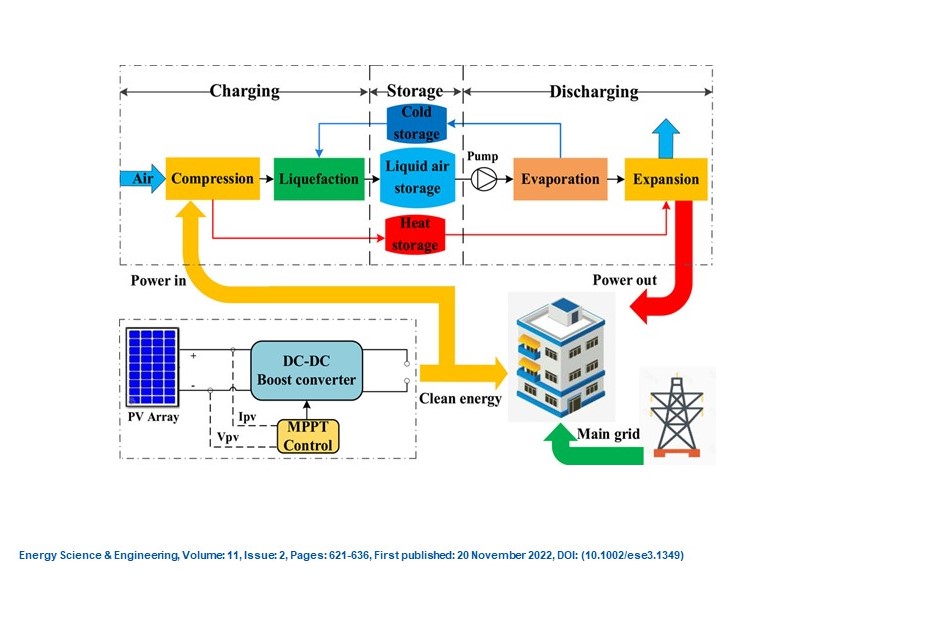Researchers from the Sichuan Normal University in China and the University of Cambridge in the UK have investigated the techno-economic feasibility of a new hybrid system integrating photovoltaics and liquid-air energy storage (LAES).
Conceived for large-scale application, LAES systems store electricity in the form of liquid air or nitrogen at cryogenic temperatures – below -150 C. They charge by using excess electricity to power compression and liquefaction of the air which is then stored as a liquid at temperatures approaching -196 C. To discharge, the liquid air warms and becomes a pressurized gas that operates a turbine to generate electricity.
The proposed system comprises a 2 MW local PV power plant equipped with maximum power point tracking (MPPT)-based boost converter. The installation is able to generate low-carbon electricity with minor fluctuations between 12.89 and 12.99 MWh a day
The LAES unit utilizes surplus power from the PV plant and compensates power for the local load with an inadequate power level. The system’s energy storage duration at the off-peak time is 9.13 hours, and the energy release duration at peak time is 6.27 hours.
For the proposed PV-LAES project, results show that the surplus renewable electricity of 6.73 MWh sent to LAES is used for generating 27.12 tons of liquid air for energy backups during the daytime. There, the LAES unit has a round-trip efficiency of 47.4% and can discharge a flexible power compensation to the load in the night.
Popular content
Meanwhile, the power demand from the main grid reduces significantly in a day from 12.78 to 3.33 MWh. Based on these data, the annual power savings is estimated to be 3449.25 MWh, and the corresponding carbon emission can be reduced by 2607.63 tons.
Regarding the economic performance, the PV-LAES system presents a dynamic payback period of 9.33 years and an accumulated life-cycle net profit of $2,260,011, the researchers found.
They discussed their findings in “Hybrid photovoltaic-liquid air energy storage system for deep decarbonization” published in Energy Science and Engineering.
“The proposed PV-LAES scheme is economically feasible from a life-cycle perspective, and can potentially realize flexible energy interaction with local renewables to achieve an integrated low-carbon power generation and storage system,” the researchers concluded.
This content is protected by copyright and may not be reused. If you want to cooperate with us and would like to reuse some of our content, please contact: editors@pv-magazine.com.



Liquid air storage could easily be modified to extract CO2 or other gases for sale to those industries that use large amounts. The CO2 could also be sequestered in a deep injection well This could actually give the plant a very large negative carbon footprint.